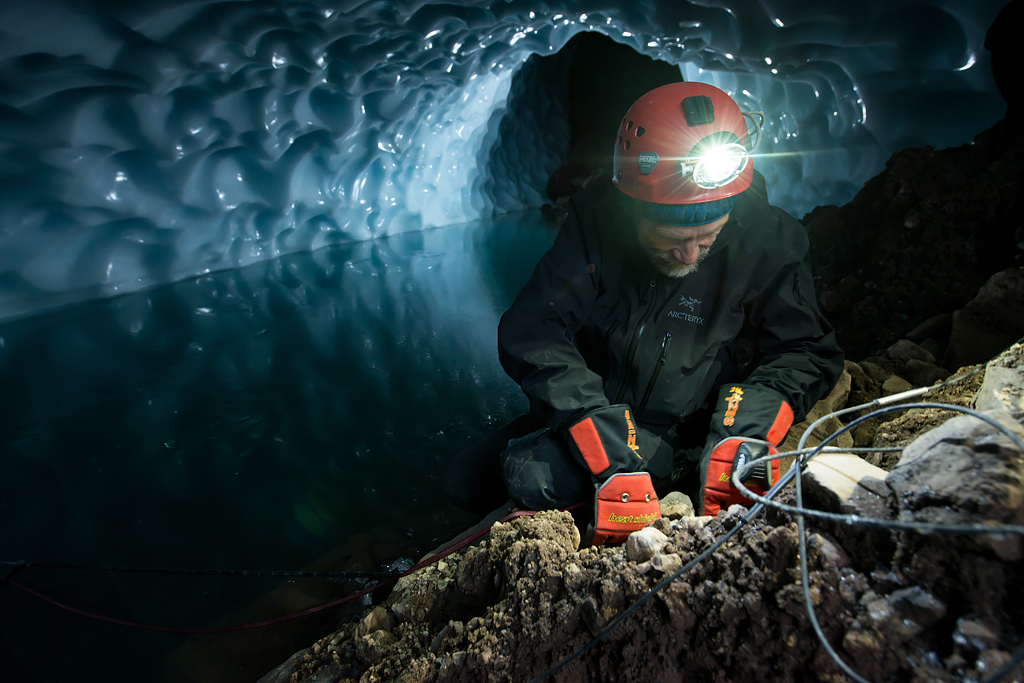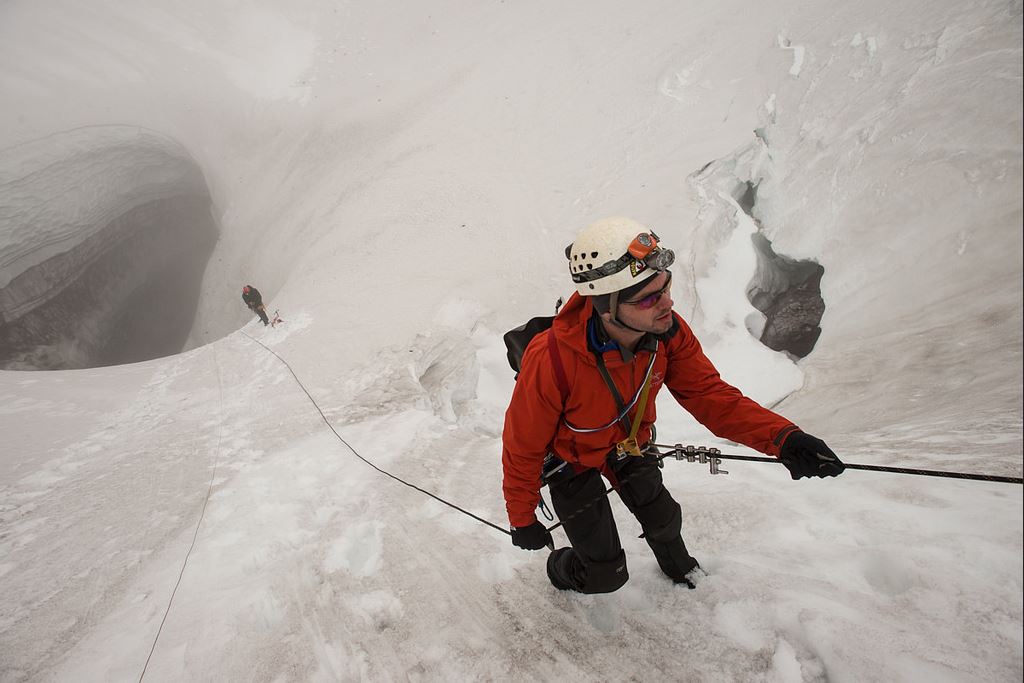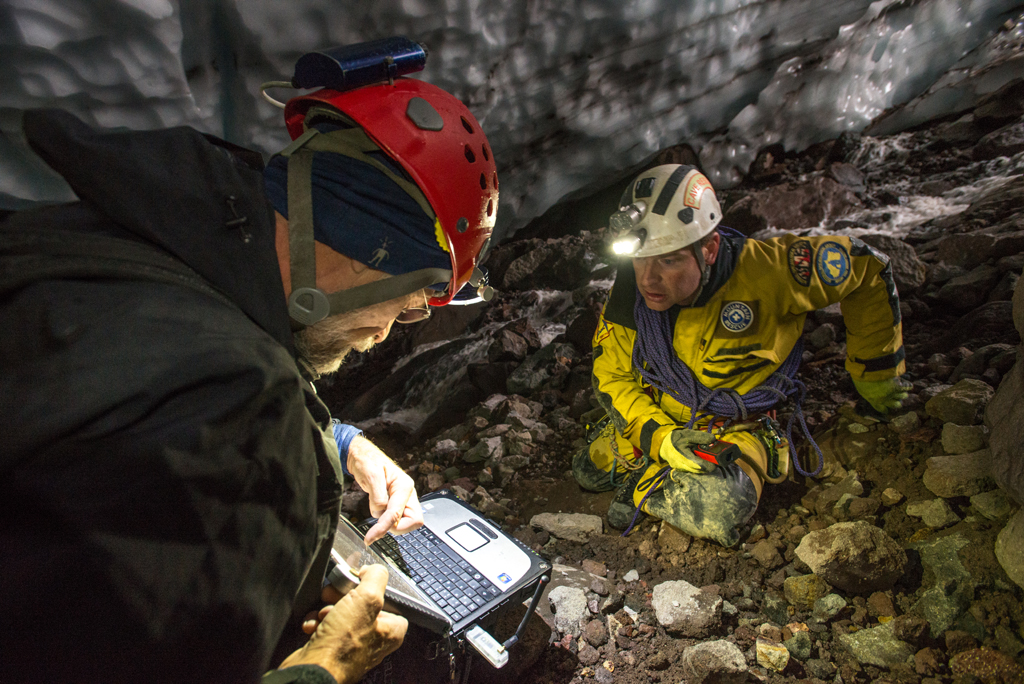



Why explore glacier caves?
Glaciers are retreating at an alarming rate—taking with them valuable scientific information. Most glaciers have crevasses, but few have cave systems.
Why explore glacier caves?
Glaciers are retreating at an alarming rate—taking with them valuable scientific information. Most glaciers have crevasses, but few have cave systems.
mission critical
Glaciers are universally-accepted indicators of climate change and global warming. Their caves offer a rare view into the internal workings of a glacier.
In addition to climatology, this research gives us a chance to look at our past, brace ourselves for impacts on our watershed, save lives, protect our natural resources, as well as take a look at our future.

Uniquely Qualified Volunteers
Glacier Cave Explorers pioneers new ways to collect valuable data from under the ice, before these unique scientific laboratories disappear completely.
Uniquely Qualified Volunteers
Glacier Cave Explorers pioneers new ways to collect valuable data from under the ice, before these unique scientific laboratories disappear completely.
Most people can't do this work. These caves are remote, dangerous and undocumented. These expeditions require a rare combination of skills.
Our volunteer team is not only dedicated, but uniquely qualified to retrieve this valuable data.
They possess a rare mix of mountaineering,
ice-climbing, rope rigging, glaciology, science methodology, expedition logistics planning, cave survey, wilderness medicine, and other skills.
Glacier caves are remote and difficult to access and these expeditions are complex. Our projects require the same level of care, detail and planning as you'd find on a Himalayan expedition.
As we've become more successful with our expeditions, scientists and others have expressed more interest in our research. We collect data under their remote guidance, following their strict methodologies.

Support Our Scientific Mission
This work isn't easy or cheap. While we work for free, we need your help with supplies.
Support Our Scientific Mission
This work isn't easy or cheap. While we work for free, we need your help with supplies.
Science is grant-driven. As much as we need and appreciate our grants, they do not cover all of our expenses. There are only a few grants available for our specialized work, and sometimes we even compete with our own scientists for these funds.
Grants are also unpredictable. Even if we get them, we might not find out until late in the game. This makes it hard to plan, budget and buy the necessary items we need for our complex expeditions.
We need survival and rescue gear, medical supplies, specialized science equipment, lab analysis of samples, helicopters, volcanic gas monitors, satellite phones, breathing apparatus, and expedition-quality food and tents. This all adds up.



